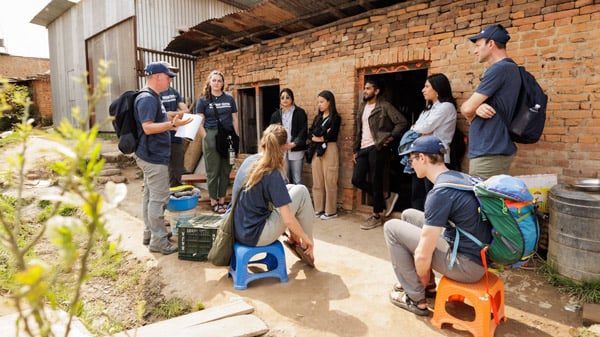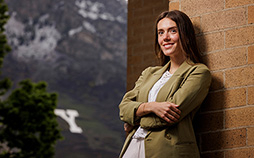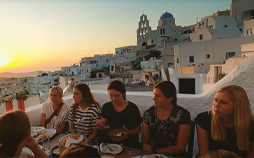BYU's Latest Truman Scholar
Jane Drinkwater exemplifies BYU’s aim to prepare students for “lifelong learning and service.”
April 2024
With each breath, brick workers in Nepal’s Kathmandu Valley inhale dangerous particulates. Hazardous aerosols are released during the brickmaking process and emissions from vehicles and factories seep into peoples’ homes, making air pollution in the region inescapable. Even indoor cooking can contribute to the prevalence of particulates, and many of the workers and their families live onsite at the kiln during the brickmaking season.
Concerned about the effects of these exposures, an interdisciplinary BYU research team traveled to Nepal to measure brick workers’ exposure to pollutants and to assess their respiratory health. The eventual goal is to develop, with the Nepali people, sustainable strategies to help them improve their well-being.
“A lot of people here don’t even know that the conditions they work in are so harmful to their health,” says recent BYU public health graduate James Lu.
The BYU group drew from their areas of expertise and collaborated with partners from the University of Utah, Kathmandu University, the Karnali Academy of Health Sciences, and local Nepali leadership. “We all have a common goal, and our unique ways of learning are creating this big-picture effect,” says nursing graduate Symbria Lewis. BYU students led out in many ways:

“I don’t know that I’ve ever seen my students so happy and so engaged in learning,” says Jim Johnston, a BYU public health professor who led the group of more than two dozen researchers. “It’s been incredibly rewarding to listen to them talk about the experiences they’re having here.” That student engagement has led to some remarkable and humbling discoveries.
Through 24-hour monitoring, the team found that the brick workers are exposed to nearly constant, dangerous levels of PM2.5 particulates, even when at home. The average PM2.5 concentration in workers was about eight times higher than the air-quality guidelines of the World Health Organization. The first analysis of data collected was recently published in the journal Atmosphere, and additional research is forthcoming.
Seshananda Sanjel, a professor at the Karnali Academy, said, “The Nepali government doesn’t have the funding [we need] for research, [so] with this collaboration we can do many more things, and I expect this collaboration will go on for many years.”

Jane Drinkwater exemplifies BYU’s aim to prepare students for “lifelong learning and service.”

Emily Flake was one of a group of health and wellness students that traveled to Ikaria, Greece, to learn about eating, living, and cooking the Mediterranean way.

A team of BYU design and nursing students decided to see what they could do to help women in Haridwar, India. While on campus, the students studied the situation, presented their findings, and secured funding to travel to India.